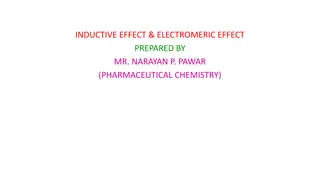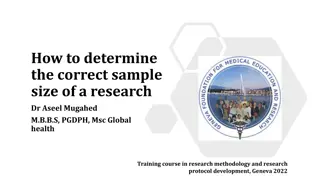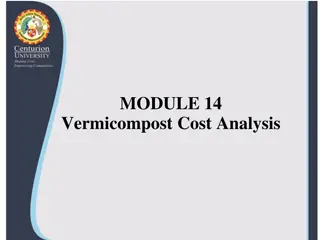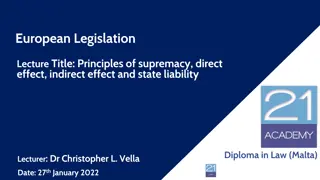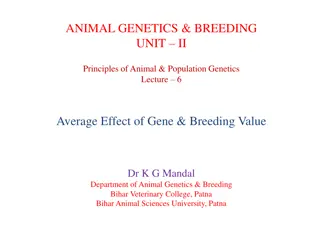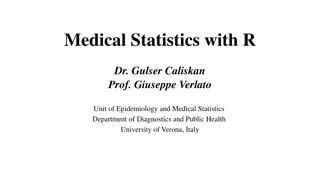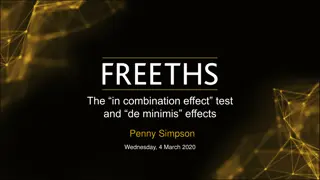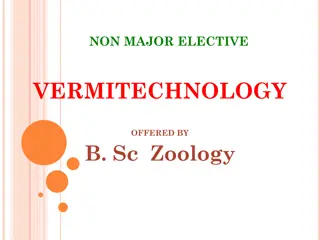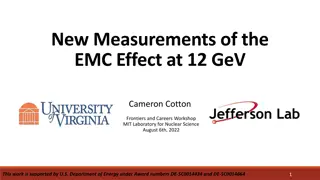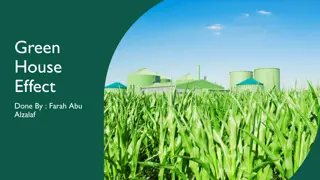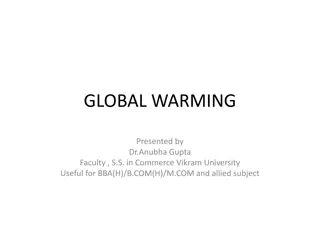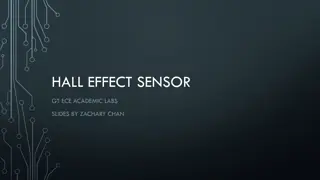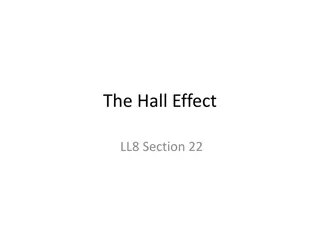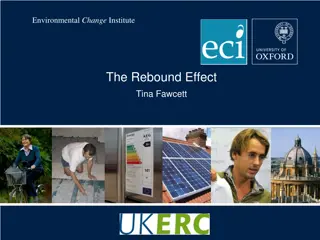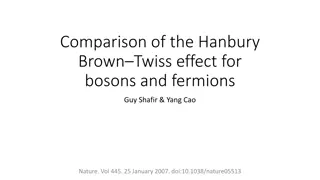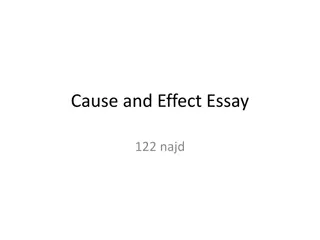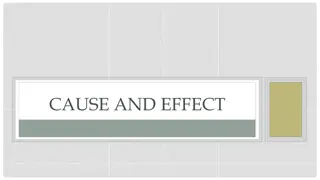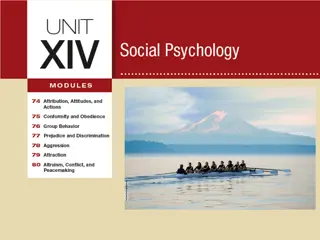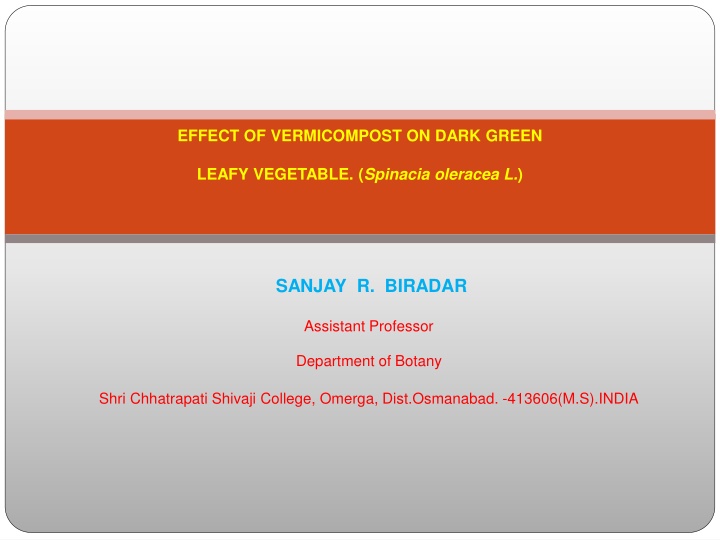
Effect of Vermicompost on Dark Green Leafy Vegetable
"This study explores the impact of vermicompost on Spinacia oleracea (spinach), highlighting the benefits of vermicomposting in enhancing soil fertility and reducing reliance on chemical fertilizers. The process of vermicompost preparation, the role of earthworms, and the results on spinach growth are detailed, emphasizing sustainable waste management practices and potential agricultural benefits."
Download Presentation

Please find below an Image/Link to download the presentation.
The content on the website is provided AS IS for your information and personal use only. It may not be sold, licensed, or shared on other websites without obtaining consent from the author. If you encounter any issues during the download, it is possible that the publisher has removed the file from their server.
You are allowed to download the files provided on this website for personal or commercial use, subject to the condition that they are used lawfully. All files are the property of their respective owners.
The content on the website is provided AS IS for your information and personal use only. It may not be sold, licensed, or shared on other websites without obtaining consent from the author.
E N D
Presentation Transcript
EFFECT OF VERMICOMPOST ON DARK GREEN LEAFY VEGETABLE. (Spinacia oleracea L.) SANJAY R. BIRADAR Assistant Professor Department of Botany Shri Chhatrapati Shivaji College, Omerga, Dist.Osmanabad. -413606(M.S).INDIA
ABSTRACT Solid wastes are produced in enormous quantities at the rate of to 1 kg / head / day in Indian society. A major portion of the solid waste is street garbage comprising leaves, grasses, paper and garbage from kitchen and 4 to 5% is from vegetables, fruits and other market wastes. This solid waste is biodegradable and can be used as a raw material for the preparation of vermicompost. (Kalambasa et al., 1993). A dumping of the biodegradable waste arbitrarily in muncipal areas cause serious environmental health problems like plague and dengue. Vermicompost will not only improve. The soil fertility and water retention but also reduce the outlay on chemical fertilizer (Vikram Reddy, 1999). In the present investigation the vermicompost was used as a nutrient source for spinach in pots and compared with 50% vermicompost and dry leaves in the garden and control with three replicates. Key Words : Vermicompost, Spinach (Spinacia oleracea L.)
INTRODUCTION The ecologically sound way for handling & disposed of the green waste is converting it to a usable resource as compost through vermitechnology or earthworm technology by using efficient species of earthworms in the composting process. It is useful for management of biodegradable wastes producing the end product as vermicompost. The vermicompost is found to be rich in plant nutrients & excellent growth promoter for plants. It has significantly enhance the growth of crop plants. The efficiency of vermicomposting depends on the composition organic substrates& application method. Water extract from vermicompost stimulants seed germination of plants. (Bityutskii et.al.1998).
MATERIALS AND METHODS Vermicompost was prepared by layering method. Earthworms of the species Eisenia foetida, the red earthworm or surface dweller, were used. (Kalambasa, 1996). Vermicompost was prepared in 2 X 2 X 2' wooden box with bottom holes for aeration. The layering was as 7.5 cm bottom layer of coir followed by 5 cm layer of cow dung manure uniformly spread over it. 500 earthworms were left on the dung manure. Fresh cow dung slurry was added evenly on it followed by semi digested organic matter was evenly distributed forming 2.5 cm. The final layer was that of 3 kg organic matter which include kitchen waste, vegetable waste, garden waste and fruit peds. Water was sprinkled on even layer to keep it moist. After 15 days again the layering was done with the garbage or kitchen waste. Sufficient water was sprinkled above it and the whole layering was covered with damp gunny bag. The box was kept in shade and was protected from rats, frogs, dogs. Hens, etc. The layering was repeated after every 15 days. After filling the box the total contents were kept moist and it was turned into Vermicompost within 45 days. The total waste used from a five members family.
Vermicompost was prepared by layering method Surface dweller, Red wiggler Worms Or Eisenia foetida,
Table 1. Analysis of Vermicompost individually and in combination with dry leaf meal. Sr.No . Analysis Vermicompost Vermicompost + Dry Leaf Meal Vermicompost 112800 Dry Leaf Meal 45120 225600 1 Fresh weight kg/ha 53.5 53.5 95.2 2 Dry matter % Dry matter kg/ha 120696 60348 42954 3 Nitrogen % 1.00 1.00 1.66 4 Nitrogen kg/ha 1207 603 713 5 Phosphorus % 0.096 0.096 0.144 6 Phosphorus kg/ha 116 58 62 7 Potassium % 0.88 0.88 0.96 8 Potassium kg/ha 1062 506 412 9 Calcium % 0.15 0.15 0.19 10 Calcium kg/ha 181 90 82 11
Analysis This Vermicompost was incorporated in pots at the rate of 1 kg / pot, & 500 gm + 200 gm of dry leaves / pot and was compared with control having three replicates each. The spinach (Spinacia oleracea L.) seeds were sown in the pots at the rate of 300 mg / pot. Spinach leaves were harvested 95 days after sowing its three kg sample of fresh vegetation was pulped (Davys & Pirie 1969) from it 100 gm of pulp was dried in oven at 900C till it gives constant wt for the determination of dry matter (D.M.). Dried sample was grinded to fine powder & used for further analysis. Nitrogen (N) was measured by Micro Kjeldhal s method & Crude protein (C.P) was expressed as N X 6.25. The method described by Fiske & Subba Row (1925.) as outlined by Oser (1979) was followed for Phosphorus estimation. Potassium estimation was done by flame photometer. The concentration was calculated on the basis of standard graph prepared by using variable concentration of the standard solution. The results were statistically analyzed by the standard method of Analysis of variance and found to be significant over the control.
Table 2 . Analysis of Palak yield (spinach) cultivated on Vermicompost individually and incombination with dry leaf meal. (Age of plant: 95 days) Sr. No. Analysis Control Vermi-compost VC + DLM S.E. C.D. 1. Fresh weight kg/ha 7819 11767 10978 151 369 2. Dry matter % 19.97 16.73 16.45 3. Dry matter kg/ha 1561 1969 1806 30 74 4. Nitrogen % 1.55 1.99 1.82 5. Nitrogen kg/ha 24.20 39.18 32.87 1.4 3.5 6. Phosphorus % 0.136 0.152 0.152 - - 7. Phosphorus kg/ha 2.12' 2.99 2.75 - - 8 Potassium % 0.96 1.25 1.2 - - 9. Potassium kg/ha 15 25 22 - - 10 Calcium % 0.15 0.20 0.20 - - 11 Calcium kg/ha 2.34 3.94 3.61 - -
RESULTS AND DISCUSSION 1. The fresh yield on Vermicompost along with dry leaves was less than the control because the dry leaves could not get sufficient time for the decomposition however the fresh yield, dry matter yield and total nitrogen in spinach cultivated on only Vermicompost shown the significant results over control. 2. The re growth yield of fresh weight after 95 days showed the significant yield over control and the same sequence was followed for dry matter and nitrogen content in the spinach leaves. Photo showing Spinach Yield Treated with Control , VC ,VC + Dry Leaf Meal
Table 3. Nitrogen efficiency ratio and percent increase over control of spinach yield cultivated on Vermicompost individually and in combination with dry leaf meal. Sr. No. Treatment Input N kg / ha Increas e veg. Kg / ha over control Increas e DM kg / ha over control Increase of total N over control Nitrogen efficiency ratio of fresh wt. Nitrogen efficiency ratio of DM Percent increase over control Fresh wt. Kg/ha - Dry Matter Kg/ha - N. Kg / ha 1 Control - - - - - - - 2 Vermi- compost Vermi- compost + dry leaf meal 1207 3948 408 14.98 3.27 0.33 50.49 26.13 61.90 3 1316 3159 245 8.67 2.40 0.18 40.40 15.69 35.82
Table 4 . C/N ratio of Vermicompost and dry leaf meal. Sr. No. Treatment Ash % Carbon % Nitrogen % C:N ratio 1. Vermicompost 15.25 8.84 1.00 8.84 2. Dry leaf meal 9.50 5.51 1.66 3.31 C:N ratio of spinach cultivated on Vermicompost individually and incombination with dry leaf meal. Age of plant = 95 (days) 10.50 1 Control 6.09 1.55 3.93 2 Vermicompost 11.25 6.52 1,99 3.28 3. Vermicompost + Dry leaf meal 9.50 5.51 1.82 3.03
The nitrogen efficiency ratio of regrowth was 3.27 for fresh weight and 0.33 for dry matter on Vermicompost while it was 2.4 for fresh wt. and 0.18 for dry matter for 50:20 combination. The percent increase over control was 50: 20 for fresh wt., 26.13 for dry matter and 61.90 for nitrogen in spinach cultivated on vermicompost while it was 40.4 for fresh wt., 15.69 for dry matter and 35.82 for nitrogen in spinach cultivated on 50:20 combination of vermicompost and dry leaves. The above results had shown that incorporation of vermicompost improved the yield of Fresh wt.. Dry wt.. Nitrogen and Protein content in the spinach leaves but 50: 20 combination could work well because it takes time for decomposition and can not be readily utilized by the crop. Table 1 shows the individual analysis of vermicompost and its 2-combinaiton with dry leaves. Table 2 shows the analysis of spinach yield after 95 days sowing along with its contents. Table 3 shows nitrogen efficiency ratio of fresh wt., Dry matter and percent increase over control in fresh weight, dry matter and nitrogen kg/ ha. Table 4 shows the C: N ratio of vermicompost and spinach after 95 days.
REFERENCE 1. Bityutskii N.P.,Lukina E.I., PatsevichV.G., Solor-evaA.N., StepanovaT.N. & Nadporozhskaya M.A. 1998. Poochvovedenie, 3: 309-315. 2. Davys M. N. G. & Pirie N. W. 1969. A laboratory scale pulper for leafy Plant material biotechnology. Bioeng. 11: 517 - 528. 3. Fiske C. H. & Subba Row Y. 1925. Journal ofBiol. Chem. 66 : 375 4. Kalambasa D., Kalambasa S., GodlevskaA., Makowieski K., 1993.Polish journal of soil science, 26 (2) : 87 - 95. 5. Kalambasa D., 1996. Organic waste and the protection and productivity Agrocenosis zeszyty - problemowe - postepow Nauk. Rolniczych., 437 : 249 - 252. 6. Oser, B. L. 1979. "Hawk's physiological chem. XIV Edn. Tata M. C. Grawhill publishing co, ltd. New Delhi. 7. Vikram Reddy M., 1999. National Symp. On perspective in Biotechnology Feb. 25 & 27, Warangal.


